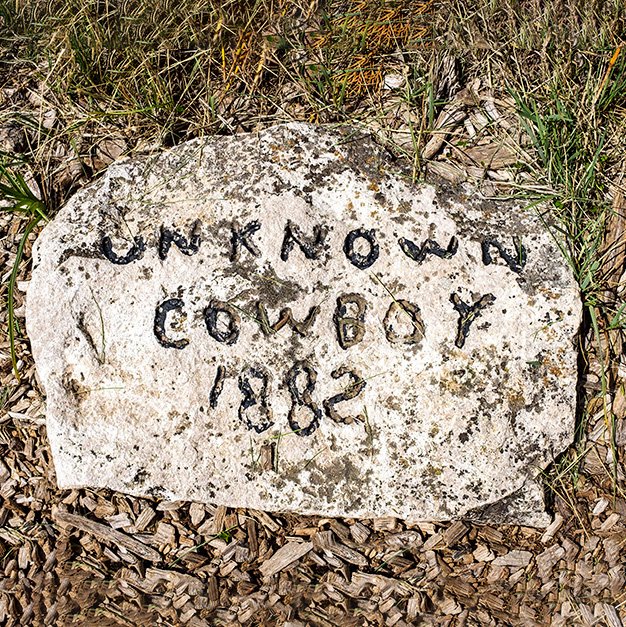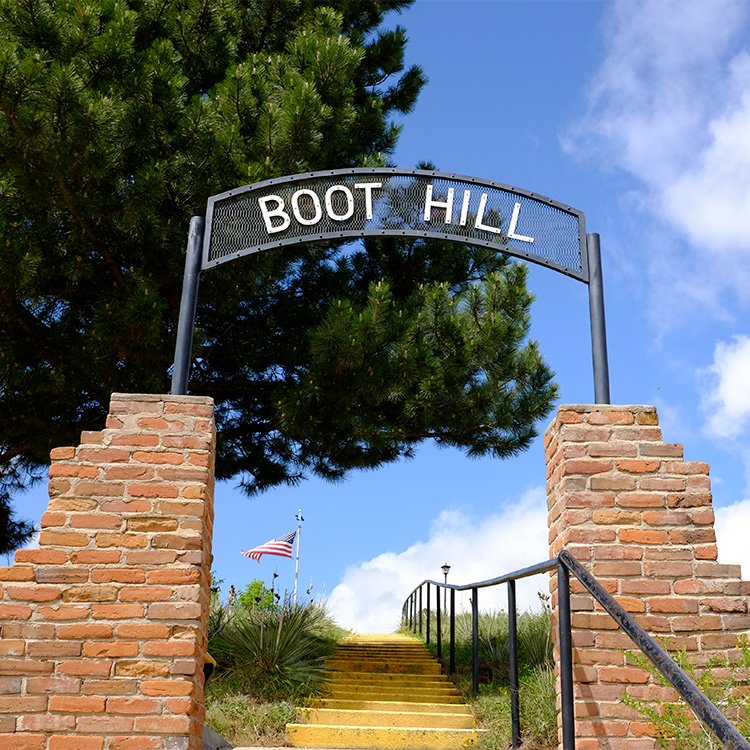June 2022
Here at the ranch, we’re decompressing from a 2,000-mile trek across the prairie to Denver and back to see our newly minted granddaughter. (Mom and baby are doing great.) What a cutie! I can hardly wait to teach her about Western lore, chess, and how to appreciate a great pizza.
During the arduous slog across Nebraska on I-80, we stopped in the town of Ogallala. On the north side of town is a little slice of history the locals have dubbed “Boot Hill.” It is a restored cemetery on a small ridge overlooking the South Platte River Valley. (I wonder how many cemeteries out West share that name?) Being the northern terminus of the Texas Trail, Ogallala started as a booming, rip-snorting Western town with a violent reputation. Between 1870 and 1885, over one million head of cattle were driven up the trail to town. There, they were sold and loaded onto railway cars and shipped to markets north and east.
Cowboys were paid at the completion of a successful drive. After so many weeks on the trail, they let off steam at the local watering holes and gambling dens. Violence often ensued. At least 14 murders occurred during the Texas Trail era. When a cowboy died with no money or identification, he was wrapped in a burlap sack (if he was lucky) and buried in a shallow grave in the town cemetery. Some were said to be buried “with their boots on,” but that’s dubious, given the price of a good pair of boots at the time.
Ogallala became known as “the town too tough for Texans.” From the historical marker at the cemetery entrance: “Although one of the first burials here was a mother and child, many came by running afoul of the law—some for stealing another man’s horse. Others were killed by re-fighting the Civil War or for questioning the gambler’s winning hand. In July of 1879, three cowhands were buried in a single day, victims of the sheriff’s guns. Another man, “Rattlesnake Ed,” was buried here after he was shot down over a nine dollar bet in a Monte game in the Cowboys Rest, a local saloon.”
The bodies of at least 48 cowboys, drifters, or settlers were buried in Boot Hill, but the count was probably much higher. Some of the dead were remembered with crude posts, carved planks of wood, or simple stones. Over the years, prairie fires and erosion took their toll, but a few original posts or stones mark the tenants of the bone orchard today.
In 1885, the town closed Boot Hill. Many bodies were dug up and reinterred at the new Ogallala Cemetery just west of town. However, many of the unknown or unclaimed continue their eternal sleep atop Boot Hill.
In the 1960s and 70s, Ogallala took an interest in its frontier history by cleaning up Boot Hill, clearing vegetation, and recovering and remarking many of the original graves. Research, aided by a grant from the Union Pacific Railroad, identified many of the bodies and helped tell their stories. Today, you can enter the cemetery free of charge (although donations are gratefully accepted). It’s a pleasant little place, and a real slice of Western history that most people miss as they race by on I-80. For more info, check out Keith County’s web page.
Boot Hill’s “The Trail Boss”
From the Boot Hill walking tour brochure: “This horse and rider statue known as The Trail Boss replaced an earlier concrete statue of Lep Sanders sculpted by Robert Summers. This sculpture represents the Texas cattle drover from the early years of the cattle drives. He appears to be looking out over the graves and town of Ogallala and back over the trail to Texas. It is a replica of an identical statue located in Dallas, Texas.”





